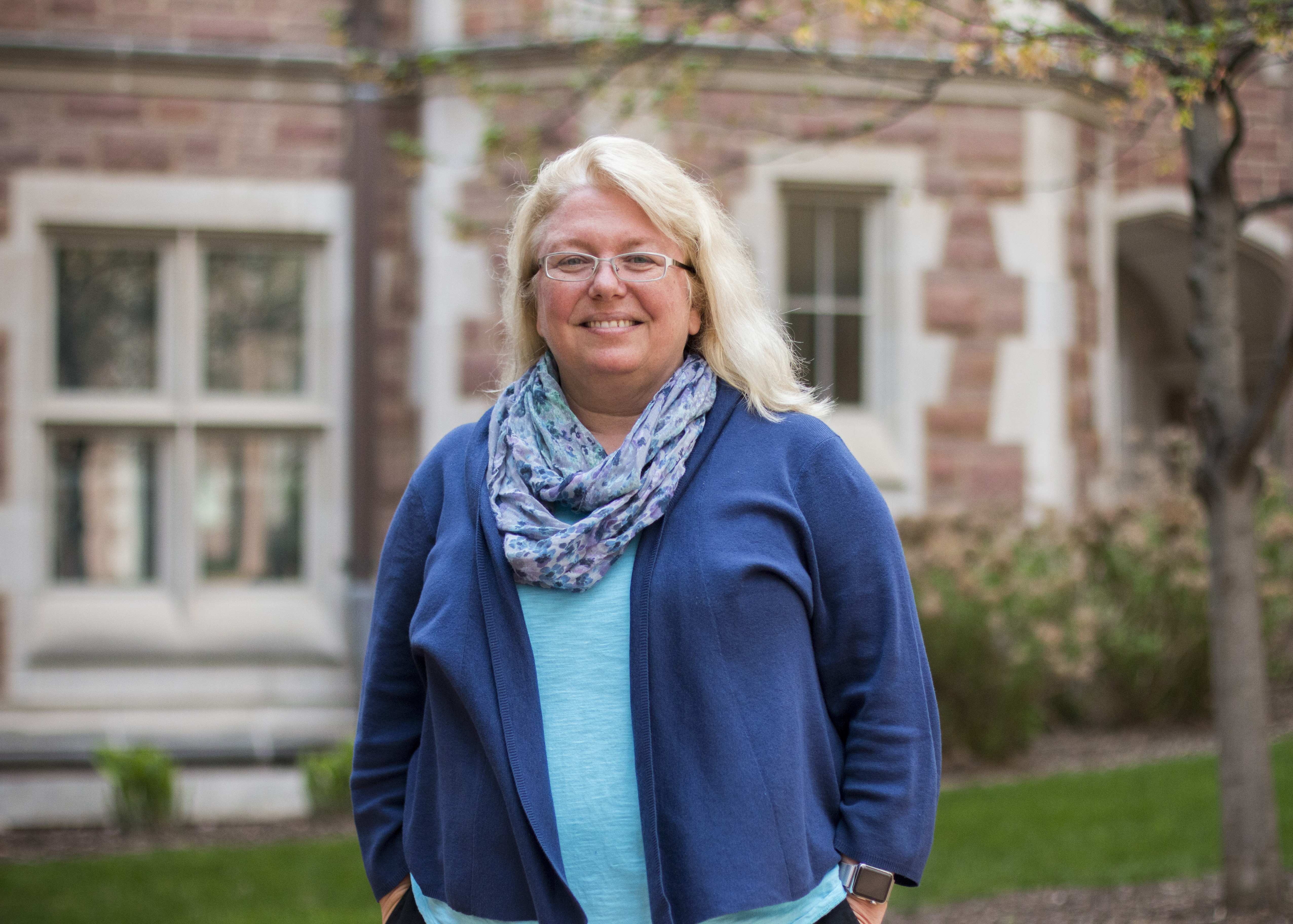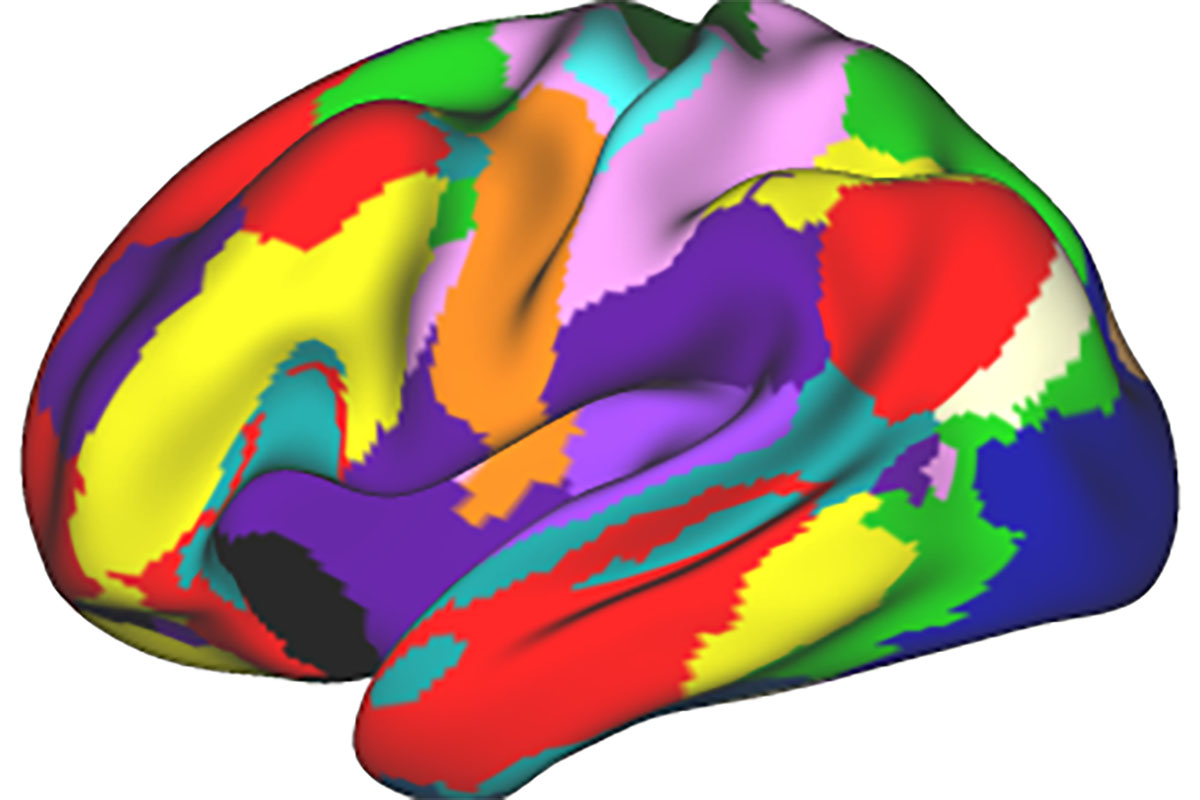In this Q&A, Deanna Barch discusses her path to a research career, the importance of interdisciplinary inquiry in health and medicine, and the big questions that drive her work. Barch was recently elected to the National Academy of Medicine.

A few weeks ago, on a late Friday afternoon just as the work week was wrapping up, Deanna Barch received an unexpected email. Barch, the Gregory B. Couch Professor of Psychiatry and chair of the Department of Psychological & Brain Sciences, knew that she had been nominated for the National Academy of Medicine – but she also knew that it often takes many years for nominations to lead to election. So it felt “out of the blue” to suddenly learn that she had received one of the nation’s highest recognitions in the fields of health and medicine. “I was incredibly honored,” she said. In this Q&A, Barch discusses her path to the Academy.
What medical and health-related questions do you address in your work?
My research is broadly focused on understanding the psychological and neural mechanisms that lead people to be at risk for the development of mental illness, particularly schizophrenia and depression. I've done work to understand the psychological and neural impairments that are present in adults who already have manifest mental illness, particularly schizophrenia and depression, and also to understand really early-life risk factors at the neural and biological and environmental level in infants.
My work's focus has been shifting to increasingly younger in life, as we try to move earlier and earlier in identifying the earliest possible manifestations of mental illness. The evidence suggests that mental illness is more treatable the earlier you can intervene. We're also starting to think about prevention, not just early intervention. Can we identify risk factors that put kids at risk for the development of mental illness, and what could we do to intervene so that they don't ever develop some of those symptoms in the first place?
Did you always want to help people with mental illness?
I have known I wanted to be a psychologist since I was in high school. I was a peer counselor and found it really interesting, and so thought I would be a school counselor working on mental health and academic issues. I'm the first person in my family to graduate from college, so when I went to college I didn't know anything about research. But then one professor basically changed the trajectory of my life and career. This professor had a habit of taking kids who did well in the class and asking them if they wanted to be involved in research. She did research on depression, and I loved the whole experience.

I then worked as a case manager for the chronically mentally ill for a year after college. I worked primarily with people with schizophrenia, so they were a very, very ill population, and there was just such a huge number of people who needed help. It made me realize that I might have a bigger impact on eventually improving people's lives through research, rather than one-on-one intervention. That's what pushed me into more of the science and research route – the idea that maybe I can have a bigger impact for a broader range of people in terms of prevention and eventual mental health help.
From the name, one might assume that the National Academy of Medicine is made up of physicians. Why do you think it’s important that they include researchers from a variety of backgrounds?
My daughter actually asked me that same question. She's like, “Wow, I didn't know you were an MD!” The criteria is whether you're contributing to specified subfields, and my work falls under psychiatry. I do think it's critical to include a variety of members, because people of different disciplinary backgrounds bring really different perspectives about the genetic, biological, and environmental determinants of health. The perspective that many PhDs can bring to the table is a diverse understanding of the ways in which the environment can contribute to health, really making it a richer representation of all the factors that we know are relevant.
Do you feel that being an Arts & Sciences faculty member contributes to your work in health and medicine?
Absolutely. My research has always been highly interdisciplinary. Coming from an Arts & sciences perspective, I've been able to bring to collaborations an understanding of basic science that we can really apply. My disciplinary training is in psychological science, and we have a great psychology department, but it’s also helpful to have colleagues in fields like sociology and biology and anthropology. Being able to ground research in a diversity of perspectives has been really valuable in the work that we've been doing. We have so many strengths in so many different areas, so you don't have to look very far to find wonderful collaborators when you want to do more interdisciplinary projects.
You've received a number of awards over the course of your career. What makes this one special?
Every award is special, but this is our nation's highest honor for people who do research in my area. I have to say that it humbles me. It's so humbling, and it's so flattering. It's gratifying to know that my peers and colleagues think highly of my work, and it gives me added energy to continue the efforts. I just wish they could do group awards, because some of my best research has been collaborative. The things we've been able to accomplish are because of the people I've worked with.
What projects are you most excited about going forward?
It's hard to pick just one! I’ll try two. I'm one of the Principal Investigators for a nationwide project called the Adolescent Brain and Cognitive Development Study. Over 11,000 kids have been recruited across the nation, and we're following them over 10 years. This is really getting us much closer to actually identifying risk factors that we could actually use to determine prevention and intervention. That is hugely exciting, because it took a long time to develop the project. It's very collaborative, and there are hundreds of investigators across the country. It's such transformative data that I think will actually allow us to make some real impacts on people's lives.
We have another project, again, very collaborative, where we are actually starting with moms who are pregnant and looking at early life factors that are both resilience factors and risk factors for brain development, health, and mental health and kids. That project is really exciting because we do think that there are things that are occurring within the first year or two of life that are really critical, both risk factors and buffers or resilience factors. That one gets me particularly excited. Helping kids works better earlier in life, because they haven't spent a lot of time living with challenges. If you can shift kids and their families onto a healthy developmental trajectory, we'll be able to take that forward in a way that's potentially really impactful.



